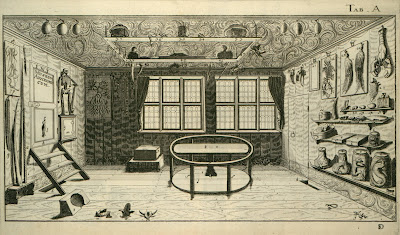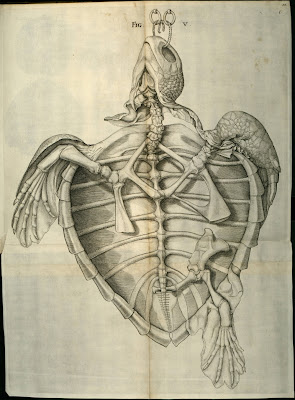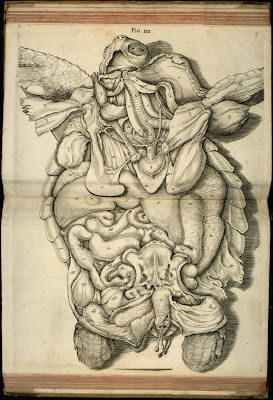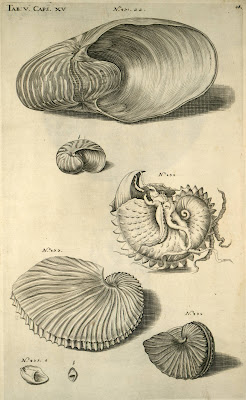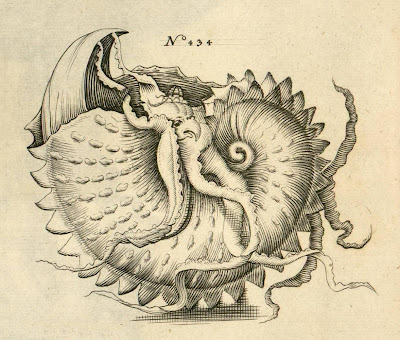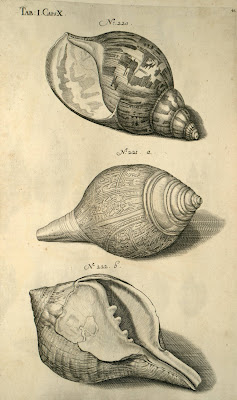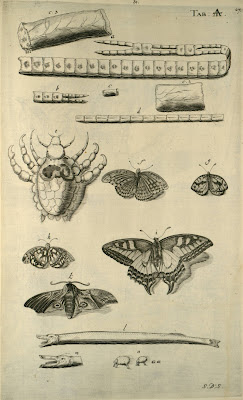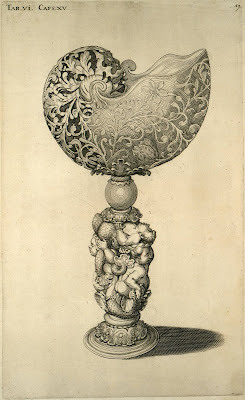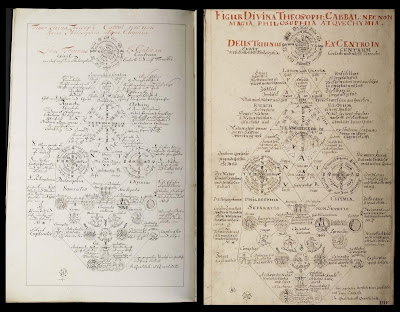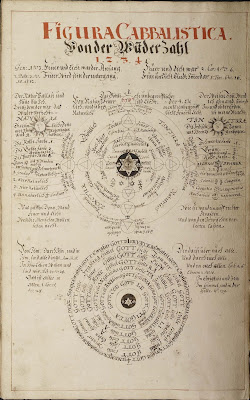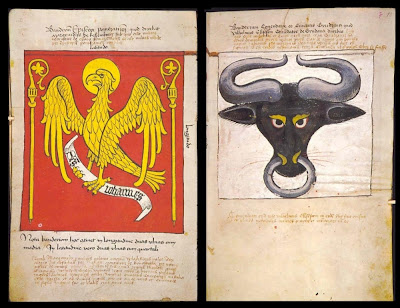is a manuscript made by Jan Dlugosz (1415-1480) containing 56 images of flags captured from the Teutonic Knights by the Polish after the battle of Tannenberg (15 July 1410, Grunwald, nowadays in Poland) and designed in 1448 by the Polish painter Stanislao Durink."
UPDATE (Sept. 2009): this book has now been
digitised by SLUB Dresden.
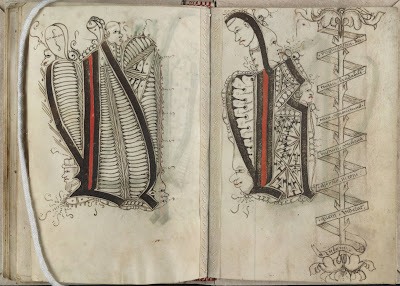
 'The Scribal Pattern Book'
'The Scribal Pattern Book' (MS. 439) from ~1515 by master calligrapher Gregorius Bock is an
outstanding textual manuscript and if you only look at one thing from this post, go to
Yale's Beinecke Library database and type in
"ms. 439". Bock presents the alphabet in a number of different scripts together with decorative initials. See: a short descriptive
table of contents and an intriguing
paper from 1994 by Susan Laflin about using Bock's work as a basis for computer reading of gothic text.

From:
'The life and work of Sir Basil Spence 1907-76: architecture, tradition and modernity' project site at the University of Warwick History of Art Department.

"
'The Theatrical Speaker; Or an Elucidation of the Whole Science of Acting', 1807 pub. Smeeton folding engraved plate."
 'Zur Geschichte der Kostume'
'Zur Geschichte der Kostume' {Costume History} [
c.1890]

Two plates from
'Anatomia Corporis Humani' by Pierre
Dionis, 1696. Although they're not very sophisticated, I'm apt to collect any anatomical drawings from history if they don't appear to be online in any medical history sites. Very tangentially, I came across Michael Stolberg's long but interesting article,
'A Woman Down to Her Bones - The Anatomy of Sexual Difference in the Sixteenth and Early Seventeenth Centuries' [IN:
Isis, volume 94 (2003), pages 274–299] which belongs as much to gender studies as it does to the history of medicine.
LINK (click 'html').
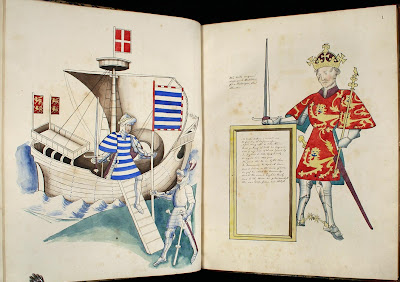

"
'Effigies and Arms of Kings, Bannerets, and Knights in the Time of King Henry the Sixth', mid 19th c - Ms4205 Larleian Lib Brit Mus."

© Peter Lazarov - (from) A Selection of Engravings 2003 The third volume of the 'Endgrains Editions'.
 'The Man Wots Got the Whip Hand of 'Em All'
'The Man Wots Got the Whip Hand of 'Em All' by William Heath, 1820.
After going to some not inconsiderable trouble to remove the watermark and upload this image, I found a better quality unblemished version
here [at the excellent
Calisphere site at the University of California]
The above seven images were found trawling through the back catalogues at
PBA Rare Book Galleries ('browse catalogues') - they have reasonable sized images [mostly not watermarked].
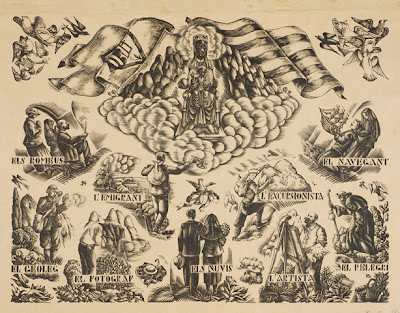
"Enric Cristòfor Ricart i Nin Montserrat's Apotheosis I xylography engraving on box"

"Ismael Smith i Marí Hormigón I, 1919 (Bullfighting) etching drypoint"

"Joan Vila i Moncau Fantasy etching"
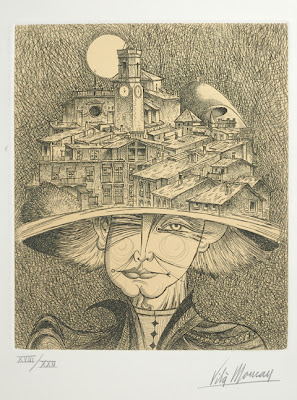
"Joan Vila i Moncau Woman's head with cap, which is a village"
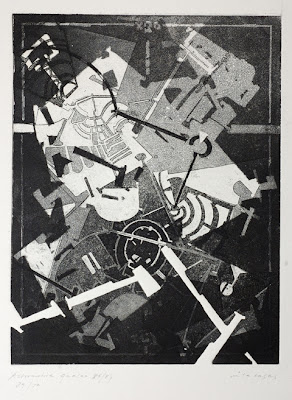
"Joan Vilacasas Quasar astrometry etching aquatint - abstraction"
The above images come from
Biblioteca de Montserrat: 'Gravadors Catalans del Segle XX' - it's a nice print exhibition site (in english).


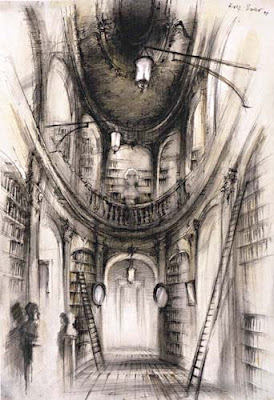
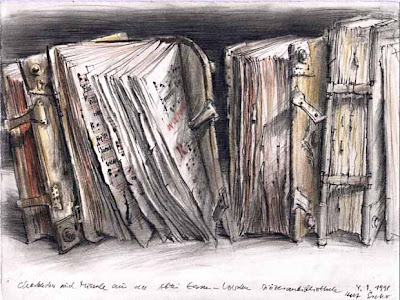

The above images are all copyright Professor Rolf Escher.
If you read German it will help. Although there is not a lot of material that I could find and nor are the images as large as we'd like, Escher makes wonderful prints of actual libraries (and books, bags and some other things). I know he has published some books too but I didn't collect the details.
Home site;
Essen;
Kunstdunst.


(Representation of the Comparative Sizes of the Planets)
"
'Astronomischer Bilder-Atlas' is a collection of engraved plates published sometime around 1870 by W. Nitzschke of Stuttgart, Germany. They are a German translation of a set first published in England by James Reynolds in 1850." At the independent
Linda Hall Library of Science, Engineering and Technology, Missouri.
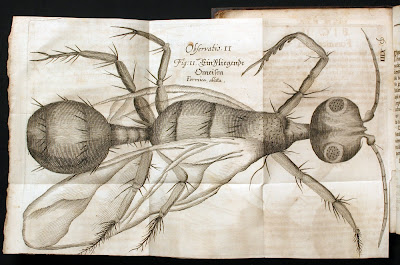
This picture of an ant is (said to be) from one of the rarest scientific books of the 17th century.
'Micrographia Nova' [1687] was the response by Johann Griendel to the landmark Robert Hooke treatise,
'Micrographia' from 1655. Griendel's improvements to the microscope provided a greater field of vision and it was the first German book devoted to the microscope. The image comes from the
University of Oklahoma Libraries History of Science Collection and the whole book (in photocopy quality) is available at
Kurt Stuber's wonderful online library. See also: Microscopy books at
the Gemmary. {Info. from the
Digital Clendening}

I didn't really find anything much out about this homage to optics other than it is by Zacharias Traber from 1690, also at Oklahoma's History of Science
Collection.
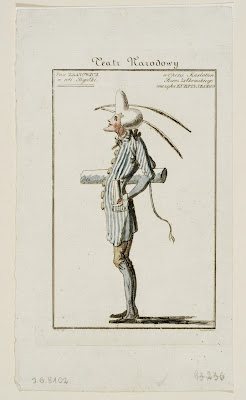
"Pan Zdanowicz w roli Pigułki w operze Szarlatan" by Jan Ligber, sometime before 1814 and somewhere in the
Polona site.

Bearing an uncanny resemblance to the BibliOdyssey laboratory mid-blog post preparation, this image comes from a treatise by Johann Rudolph Glauber, a Dutch-German apothecary, alchemist and chemist.
'Opera Omnia Chymica' was published in 1651 but I can't remember where this image comes from. Glauber
(1604-1670) was one of those true straddlers of the alchemy/chemistry world, believing in the Philosopher's Stone but also discovering Manganese and devising methods of producing nitric and sulphuric acids and fertilisers. (
Galileo,
wiki,
alchemy)
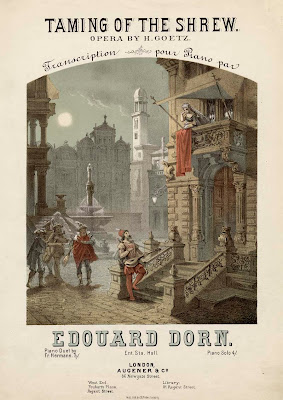
Opera advertisement from 1878 in the
Trinity College of Music Mander & Mitchenson Theatre Collection (click 'The Catalogue' and then good luck: it's not a user friendly site)
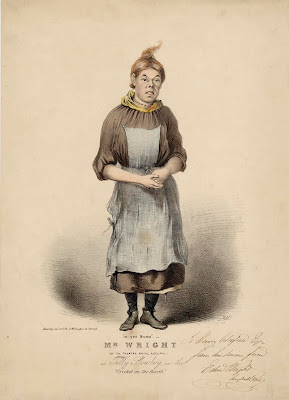
"-m-yes Mums"
'Mr Wright (of the Theatre Royal Adelphi) as
Tilly Slowboy in "The Cricket on the Hearth"' by Madeley 1847 also at
Jerwood Library. Incidentally, Madeley did a couple of anthropomorphic characters in a
previous post.

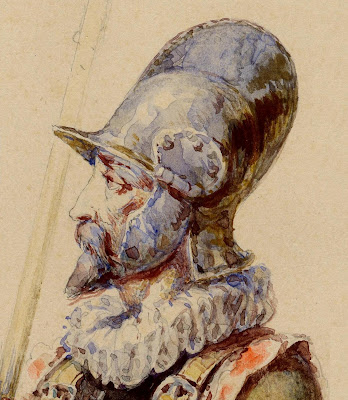
"Original watercolor signed by Gerasch; standing figure in military costume with cuirass, helmet, sword, leaning on staff of pike." c. 1580.
This image and detail come from a relatively new site (May '07) with an enormous quantity of military prints.
'Prints, Drawings & Watercolors from the Anne S. K. Brown Military Collection' at Brown University seems to include their (already online) collection of Napoleonic prints but there is much more in here. We are slightly stymied due to there being no browsing feature ("a" returns >2000 prints), no metadata categories and although the prints are huge (click the detail above to see the size at highest resolution) the images can't be downloaded
(try as I might). Consequently, the above images are spliced from many screencaps. Despite these perceived shortcomings, it is a formidable collection. {To be fair, this is an ongoing project and over 6000 prints will eventually become available)
Update: Peter, the Curator of the Military Collection, wrote to advise that you can now download low resolution images (they are about screen size).
Just a couple of other things..

